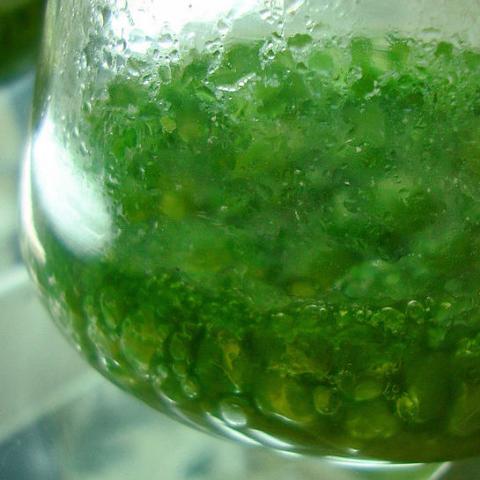Toxic Algae Harmful to Pets Detected in Wapato Marsh in Oaks Bottom Wildlife Refuge
ALERT: Do not let dogs swim in or drink from the Wapato Marsh Wetland Habitat in Oaks Bottom Wildlife Refuge due to the current toxic algae bloom. That green, scummy sheen is deadly for children and pets. The Oregon Health Authority is advising the public not to drink the water. Do not drink water even if you boil or filter. Do not swim or boat in it.
View Current and Past Toxic Algae Advisories
On Thursday, July 18, 2024, Oregon Health Authority (OHA) issued a recreational use health advisory for the Fairview Lake in Multnomah County due to the presence of a cyanobacteria bloom and cyanotoxin levels above safe recreational use values for human and animal exposure.
RISK TO CHILDREN AND PETS:
Children and pets are at increased risk for exposure because of their size and levels of activity. Dogs can get extremely ill and even die within minutes to hours of exposure to cyanotoxins by drinking the water, licking their wet fur or eating the toxins from floating mats or dried crust along the shore. This is regardless of a recreational use health advisory in place.
Be aware that dogs can become ill and die from water intoxication after drinking excessive amounts of water while swimming or fetching objects for long periods of time. Intoxication is a potentially fatal disturbance in brain function resulting from an imbalance of electrolytes in the body. Water intoxication and heat stroke can cause similar symptoms as exposure to cyanotoxins.
ADVISORY LOCATION:
This advisory is currently limited to the Wapato Marsh Wetland Habitat in Oaks Bottom Wildlife Refuge area based on available data. Efforts are underway to collect samples to better define the extent of the public health advisory. OHA recommends that people keep an eye out for visible signs of bloom in other areas of the river and stay out of the water in locations with visible scum.
Oaks Bottom Wildlife Refuge is in Multnomah County, along the Springwater Corridor.
SWIMMING AND HIGH SPEED BOATING:
People and pets should avoid swimming and high-speed water activities, such as water skiing or power boating, in areas of the river where blooms are, as the major risk of exposure is from ingesting water. These toxins are not absorbed through the skin. However, if you have skin sensitivities you may get a puffy red rash.
SAFE ACTIVITIES:
People are encouraged to visit the Oaks Bottom Wildlife Refuge and enjoy activities such as fishing, camping, hiking, biking, picnicking, bird watching, canoeing and kayaking. Boating is safe as long as speeds do not create excessive water spray. Sprays could lead to the risk of inhaling cyanotoxins.
HOW LONG WILL THE ADVISORY LAST?
There's no clear end to when the blooms will go away, and they could last for weeks to months. Blooms develop in rivers when the water becomes slack and warm, and may last until weather and rains cool the water levels to a point where the blooms can no longer propagate.
Learn more and see current advisory information on the Oregon Health Authority Website
ABOUT BLUE-GREEN ALGAE POISONING:
Blue-green algae toxin poisoning, also known as cyanobacterial poisoning, is an acute, sometimes fatal, condition caused by the ingestion of water containing high concentrations of cyanobacteria.
In Oregon, dogs have become very sick, and some have died after swimming in and swallowing water affected by toxic algae.
Poisonings are most likely to occur during warm, sunny weather when algae blooms are more intense, and dense surface scums are present. If you find thick, brightly colored foam or scum at a lake, pond or river, don’t let your pet drink or swim in the water.
IF YOUR PET IS EXPOSED:
If your pet goes in the water:
Don’t let your pet lick its fur.
Wash your pet with clean water as soon as possible.
If your dog shows symptoms such as drooling, weakness, vomiting, staggering and convulsions after being in bloom-affected water, seek immediate veterinary care.
Acute, life-threatening symptoms from cyanobacterial toxins often develop rapidly. Death can occur within 4 to 24 hours after exposure.
If you believe you or your pet have been exposed to a cyanobacteria bloom, OHA staff are available to answer health related questions and to receive and document illness reports.
For more information, or to report potential exposure, pet owners are encouraged to visit healthoregon.org/hab, call toll free 1-877-290-6767, or e-mail Hab.health@state.or.us.
